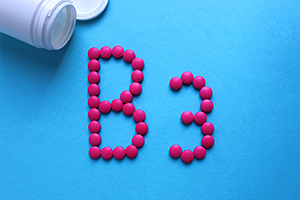



| By Dr. Ronald Hoffman
President Donald Trump’s recent physical exam has occasioned lots of commentary, much of it snarky. It has even spawned a new hashtag: #Girther, a skeptical allusion to Trump’s claim that he is 6’3” and 239 (Some believe he’s exaggerating his height and minimizing his weight). Trump’s physician Dr. Ronny Jackson—who we have no reason to suspect is partisan, because he attended to two previous presidents, and who sports more “fruit salad” on his uniform than a Rear Admiral—pronounced him in “excellent” health. What does that mean?
 The purpose of this blog is not to pile on, nor is it intended to give Trump a pass for his well-documented lifestyle excesses (a predilection for fast food, minimal exercise, and inadequate sleep). Rather, Trump’s physical offers a teachable moment, a case study of risk assessment with relevance to many of us.
The purpose of this blog is not to pile on, nor is it intended to give Trump a pass for his well-documented lifestyle excesses (a predilection for fast food, minimal exercise, and inadequate sleep). Rather, Trump’s physical offers a teachable moment, a case study of risk assessment with relevance to many of us.
Assuming they’re correct, Trump’s height and weight translate to a body mass index (BMI) of 29.9, which is overweight, but just a shade below the cut-off for frank obesity. Like many health professionals, I’m wary of the BMI as a determinant of fitness because a healthy, shredded 6’3” NFL tight end could easily check in at more than 239 pounds. You can check your BMI with a BMI calculator.
Better to consult Trump’s tailor for his pants size, because waist circumference has been deemed a better gauge of low-grade inflammation and cardiometabolic risk than BMI. For a male, a waist circumference of 40 inches or greater is especially problematic.
But the ultimate arbiter of fitness is a body composition test that yields a lean-to-fat ratio. By that metric, “fit” men should have 14-17% body fat; women 21-24%. (And, yes, you can be too thin!)
Then there’s Trump’s cholesterol, which clocks in at 223, with an HDL of 67 and an LDL of 143. We know he’s taking a low-dose statin—Crestor—so it probably would be worse without it. His LDL is considered high; opinions vary, but for an adult male without other risk factors like smoking, diabetes, or hypertension, the goal is generally 130 or less. (For a dissenting opinion on the significance of LDL, check out my recent interview with the “LDL Skeptic”, Dr. David Diamond.) On the other hand, Trump’s HDL (“good”) cholesterol is relatively high for a male, conferring him a favorable total cholesterol to HDL ratio of 3.3 (Under 4 is considered desirable).
There are calculators that yield an individual’s 10-year risk of a cardiovascular event based on cholesterol scores and other basic stats. Plugging in Trump’s numbers, he’s assigned a risk of 16.7%, along with an admonition to “take a moderate to high dose statin.” Using the same calculator, my risk is lower, but I still received the same advice about taking a cholesterol-lowering drug—pretty much the default if you’re a senior male, the way the American Heart Association loads the dice in favor of statins.
A 16.7% 10-year risk of a heart attack sounds pretty dire, but you have to consider the converse: If this assessment is correct, Trump has an 83% chance of attaining the advanced age of 81 without suffering a heart attack, which is actually pretty good, considering how prevalent heart disease is in senior men. It’s worth noting that Bill Clinton—also 71—has already undergone triple bypass surgery for blocked arteries. Former Vice President Dick Cheney had his first heart attack at age 37, followed by four more, yet he was still considered fit for high office, and is now 76.
A salient revelation about Trump’s fitness comes to us via his coronary artery calcium (CAC) scores, which are better indicators of the presence of heart risk than surrogate markers like cholesterol. Developed by Dr. Arthur Agatson—yes, the selfsame author of the South Beach Diet!—these scores quantify the calcium associated with atherosclerotic plaque. A score of zero—like I had recently—pretty much gives you a 15 year warranty against heart disease. Trump’s scores were 34 in 2009; 98 in 2013; and 133 now, conforming to the usual trend of worsening scores over time.
It’s unusual, but not entirely impossible, for a relatively low score of 133 to connote a high degree of coronary artery blockage that could predict an imminent heart attack. Statistically-speaking, a score of 101-400 is associated with a 13% chance of coronary artery narrowing. If we apply the MESA (Multi-Ethnic Study of Atherosclerosis) calculator to Trump’s scores, we find he’s in the 46th percentile—about average—for a man his age. 85% of 71 year old white males have at least some plaque. At my age of 65, only 23% of white men have zero plaque like me.
Another calculation yields an arterial age of 76 for Trump; mine is 39 (same as Jack Benny!).
If we really wanted the scoop on Trump, we’d have fractionated his LDL, looking for the ratio of large to small particles, and % oxidized LDL. We might have run a glucose tolerance test, checking for abnormal insulin response, or determined his Apo A/Apo B ratio, homocysteine, highly sensitive C-reactive protein, lp(a), fibrinogen, Omega 3:6 ratio, and various vitamin and mineral levels.
But health is more than the sum total of your test scores. Even though a new artificial intelligence (AI) app promises to predict your risk of dying, there’s something ineffable about longevity. As discussed in The Longevity Project, survival may be more predicated on certain personality characteristics (like tenacity and extensive social and family ties) than on other “healthy” lifestyle practices like diet and exercise. Or, alternatively, as Dr. Jackson responded when asked to defend his assessment of Trump’s health as “excellent” even though he’s out of shape: “It’s genetic.”
On another note, Trump’s erratic behavior is less likely to be explained by dementia, because he aced the Montreal Cognitive Assessment (MoCA); See if you can get all 30 right like he did.
Finally, it’s worth noting that Trump’s health issues are hardly a White House novelty. At least two presidents had heart attacks (Eisenhower and Harding, the latter dying in office); Lyndon Johnson is said by some to have suffered a heart attack while in office, and died soon thereafter at the age of 64. Two had strokes (Woodrow Wilson and FDR, the latter also dying at 64). And 5’11” William Howard Taft weighed in at 340 pounds at the end of his presidency with a BMI of 47!
But, actuarially speaking, by far the greatest risk to the survival of American presidents comes from an overlooked specter: Four presidents have been assassinated (Lincoln, Garfield, McKinley and Kennedy), which equates to a 9% risk of not living through a term in office!
While we may not always like what we see, we can be thankful that the modern era has finally lifted the curtain of secrecy that has long concealed the facts about presidential health.
Though we think of declining estrogen as the hallmark of menopause, it's actually common for…

Up to 12 percent of Americans have ulcers at some point in life. Peptic ulcers…
Gallbladder disease is a modern illness. An estimated 20 million Americans have gallbladder disease. The…

This past week we were regaled with headlines like: High levels of niacin may increase…

March is National Nutrition Month and, needless to say, good nutritious food is essential to…

I recently attended the Integrative Healthcare Symposium (IHS), an annual conference held here in Manhattan. The…

Exploring the Healing Power of Herbs with Dr. Bill Rawls, Part 1

Our virtual voicemail is open 24/7, so there's no need to wait to submit your questions for Dr. Hoffman. Leave a message, and you may hear your question featured on the Intelligent Medicine radio program!